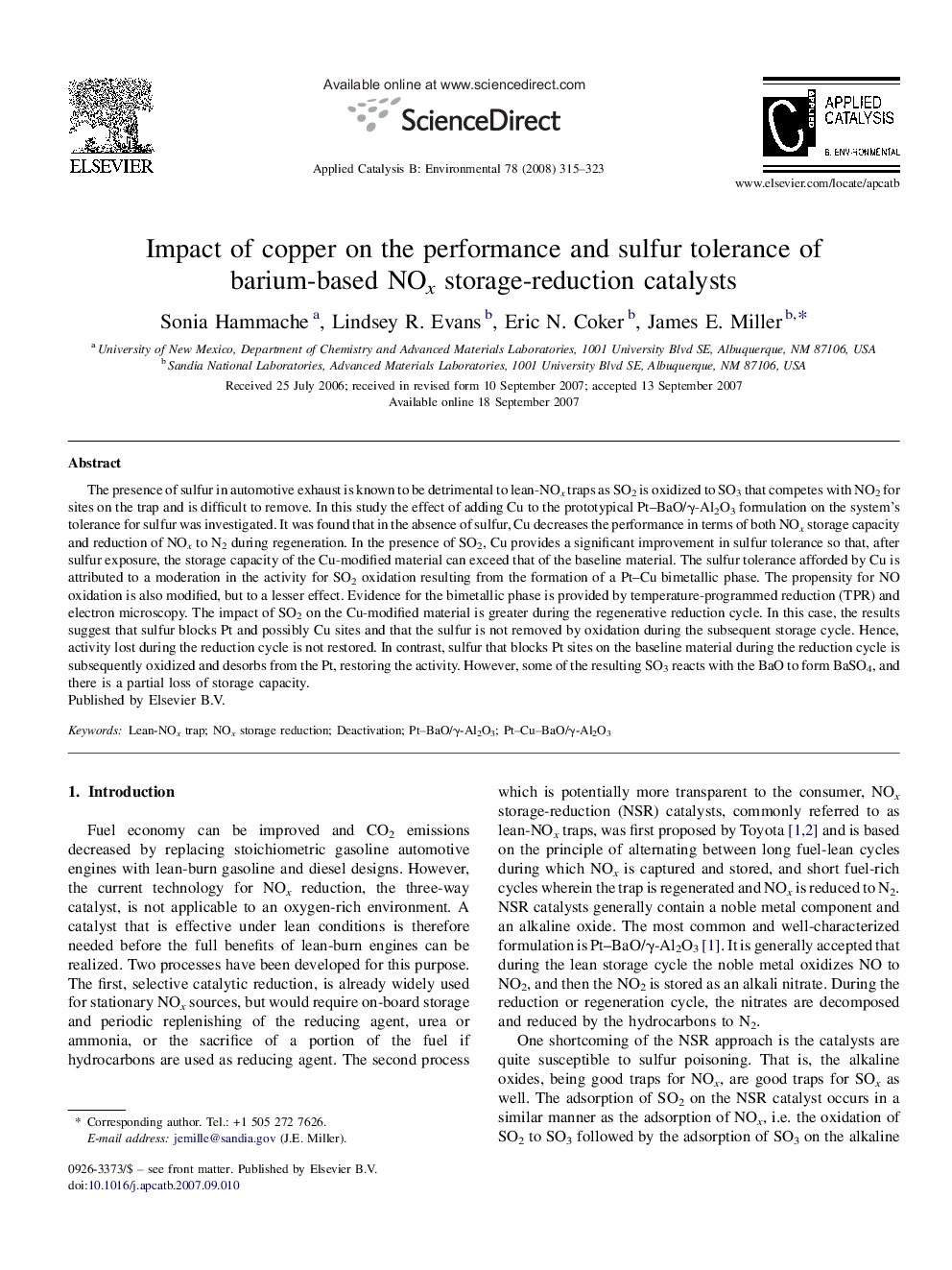| Article ID | Journal | Published Year | Pages | File Type |
|---|---|---|---|---|
| 48319 | Applied Catalysis B: Environmental | 2008 | 9 Pages |
The presence of sulfur in automotive exhaust is known to be detrimental to lean-NOx traps as SO2 is oxidized to SO3 that competes with NO2 for sites on the trap and is difficult to remove. In this study the effect of adding Cu to the prototypical Pt–BaO/γ-Al2O3 formulation on the system's tolerance for sulfur was investigated. It was found that in the absence of sulfur, Cu decreases the performance in terms of both NOx storage capacity and reduction of NOx to N2 during regeneration. In the presence of SO2, Cu provides a significant improvement in sulfur tolerance so that, after sulfur exposure, the storage capacity of the Cu-modified material can exceed that of the baseline material. The sulfur tolerance afforded by Cu is attributed to a moderation in the activity for SO2 oxidation resulting from the formation of a Pt–Cu bimetallic phase. The propensity for NO oxidation is also modified, but to a lesser effect. Evidence for the bimetallic phase is provided by temperature-programmed reduction (TPR) and electron microscopy. The impact of SO2 on the Cu-modified material is greater during the regenerative reduction cycle. In this case, the results suggest that sulfur blocks Pt and possibly Cu sites and that the sulfur is not removed by oxidation during the subsequent storage cycle. Hence, activity lost during the reduction cycle is not restored. In contrast, sulfur that blocks Pt sites on the baseline material during the reduction cycle is subsequently oxidized and desorbs from the Pt, restoring the activity. However, some of the resulting SO3 reacts with the BaO to form BaSO4, and there is a partial loss of storage capacity.
